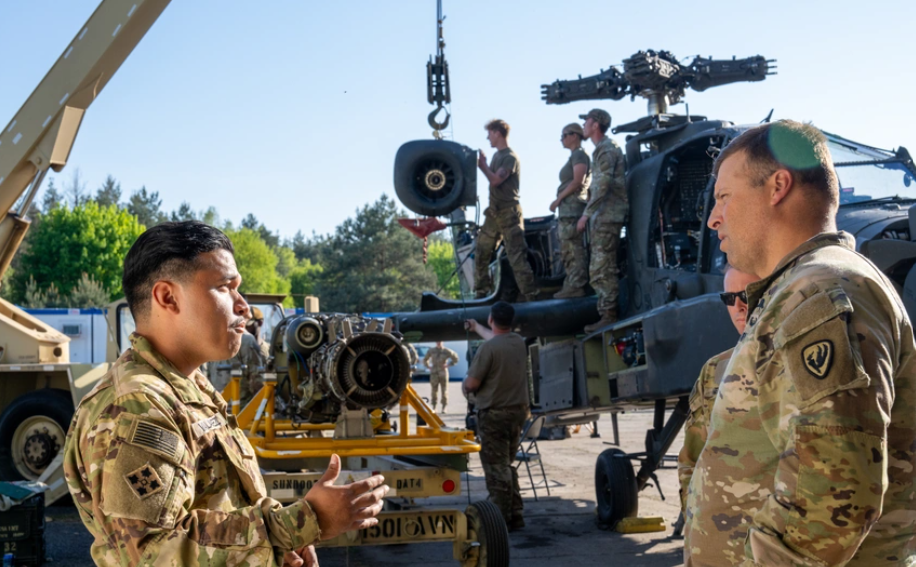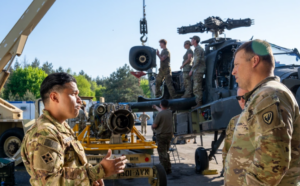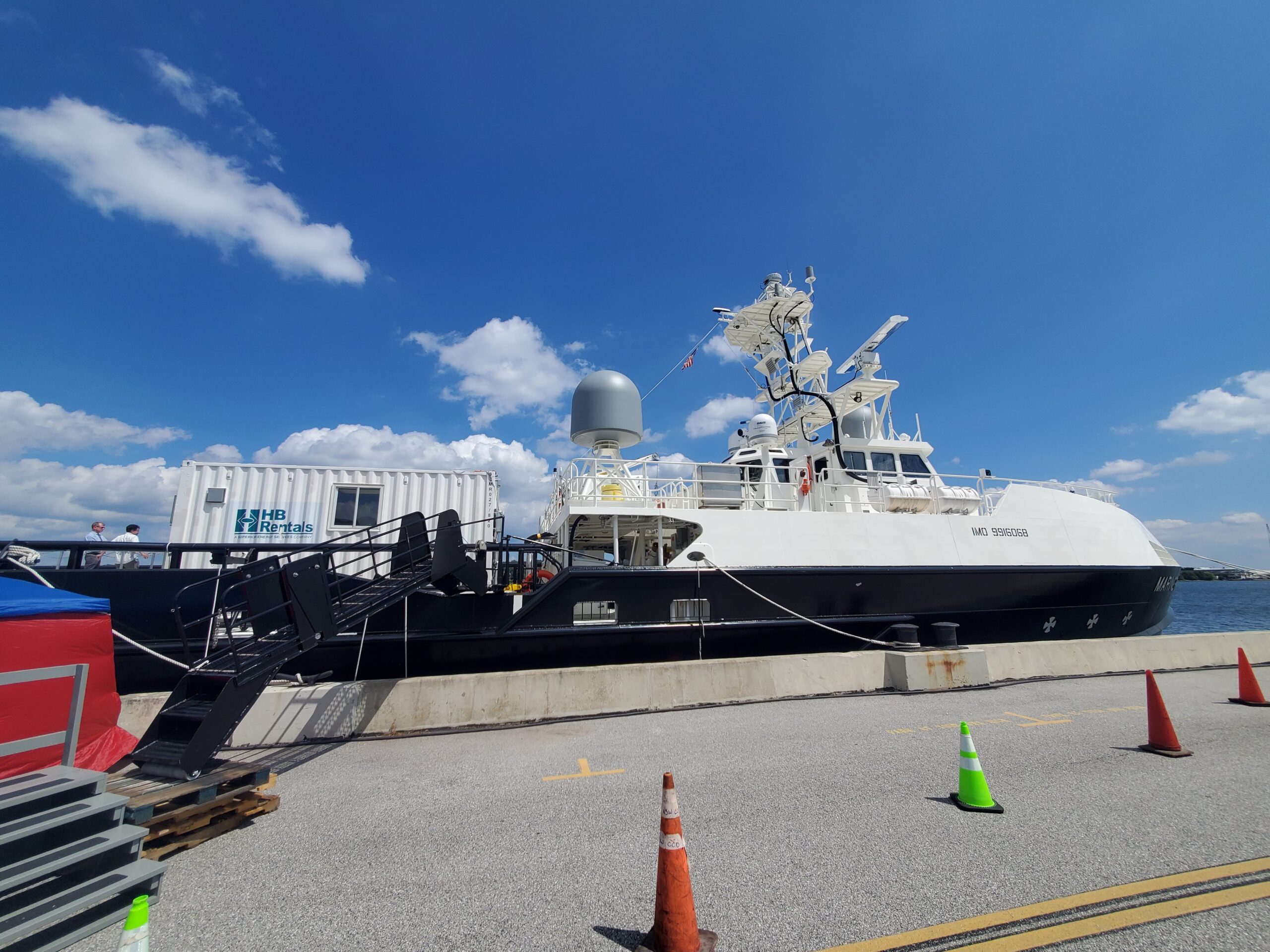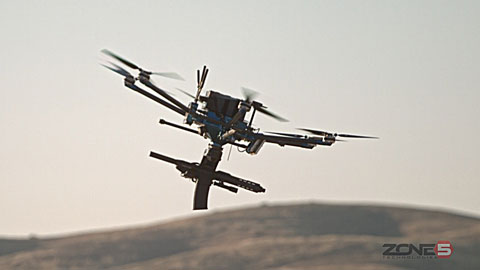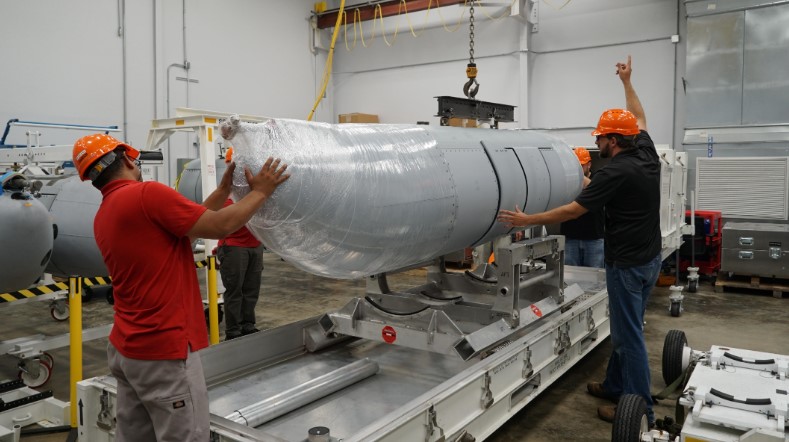ST. LOUIS—The National Geospatial-Intelligence Agency (NGA) has awarded initial task orders under its new commercial analytics service programs and has more to come in the next few weeks and months, the agency’s deputy director said on Sunday.
The upcoming awards under Luno A will for petroleum, oil, liquefied natural gas, storage and pipeline monitoring, raw area search, and facility monitoring, Brett Markham said in a keynote address at the opening day of the annual GEOINT Symposium.
NGA last September selected 10 companies to compete for task orders under the $290 million Luno A contract. So far, awards valued at less than $10 million each have been given to Maxar Technologies for facility monitoring, and
Electromagnetic Systems Inc. (EMSI) for feature identification with the aim being to “test out a specific new commercial analytics capability,” an agency spokesperson told Defense Daily last week.
In addition to Luno A, NGA in January awarded the $200 million Luno B contract.
“Luno A is focused on facility monitoring, feature identification, infrastructure and high cadence network monitoring and general change detection,” Markham explained. “Luno B is focused on human domain monitoring, and domain awareness, and custody services. Both contract vehicles also provide the GEOINT community access to emerging products, data and services.”
Vendors selected to compete for work services under Luno A and B are Airbus U.S. Space & Defense, Booz Allen Hamilton [BAH], BlackSky’s [BKSY] Geospatial Solutions business, BlueHalo, which is now part of AeroVironment [AVAV], CACI International [CACI], EMSI, Maxar, NV5 Geospatial, Royce Geospatial Consultants, and Ursa Space Systems. BAE Systems, Deloitte, and Planet Labs [PL] won spots on Luno B.
In the next few months Luno B task orders will be made for human geography, maritime domain awareness, and damage assessment and change detection mainly related to disaster response, Markham said.
One of NGA’s core missions is “expanding analytics services,” he said.
Under a separate commercial analytics program for maritime domain awareness (MDA) called Project Aegir, NGA last July awarded Privateer $2 million using a rapid acquisition vehicle called a Commercial Solution Opening (CSO) (Defense Daily, July 23, 2024). Testing under that pilot contract gave NGA the “knowledge to inform future MDA-related acquisitions in record time,” Markham said.
In a parallel effort last year also under Project Aegir, NGA awarded the Automated Analysts for Maritime Law Enforcement and Security (AA MLES) contract to a small business “to satisfy an ongoing U.S. Coast Guard, commercial joint need in the MDA space,” he said. That award was also part of Project Aegir.
NGA has not disclosed the AA MLES awardee.
Markham said the AA MLES contractor applies artificial intelligence such as computer vision to sift through imagery to detect vessels and compare the detections with other data “to identify anomalies, including dark or unattributed ships, spoofing, and ship-to-ship or bunkering events.” Bunkering refers to supplying ships with fuel.
“With our industry partners, we will process over 12 billion square kilometers of imagery resulting in over 11 million detections,” he said. “And we’re growing this effort to support over 300 customers at this point, from 16 government organizations. Because of the success demonstrated during our initial six-month pilot, we extended the contract for another six months and are continuing to invest in delivery and enduring operational impacts.”



